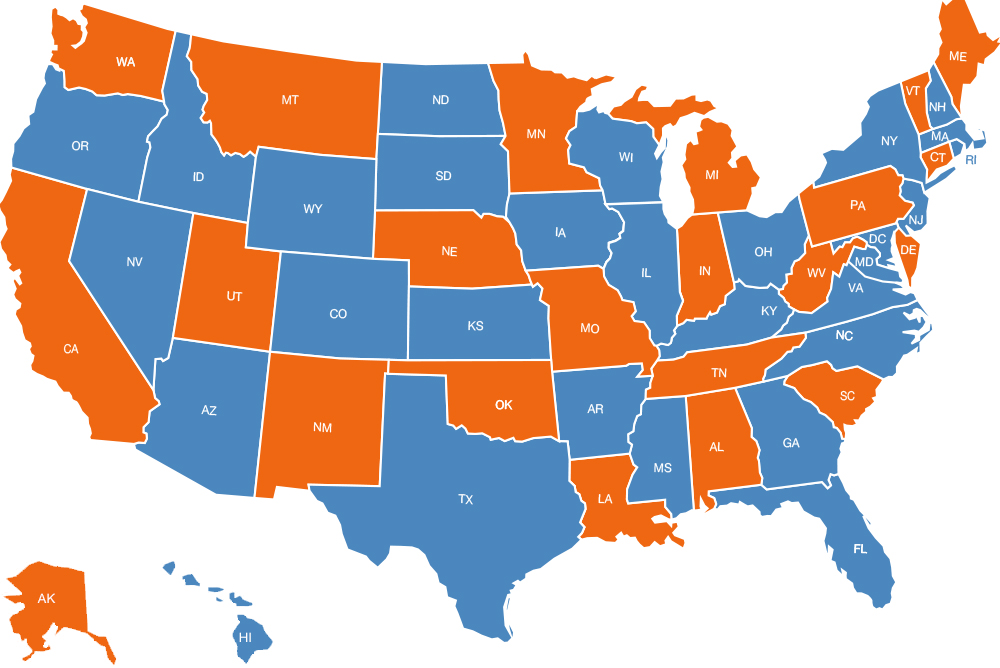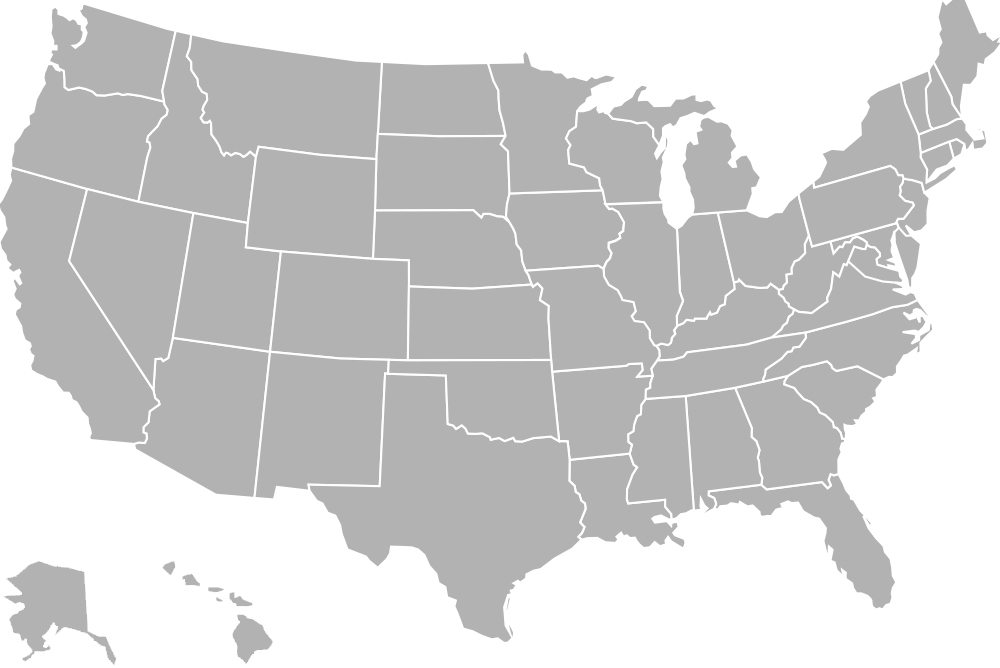Playground Planning Checklist: How to Create and Carry Out Your Playground Plans
PlaygroundEquipment.com can provide you with everything you will need to turn your playground plans into reality, from shades to swings, slides, and climbers. But first, you'll need to get organized, and our free playground planning guide can help. Follow our checklist to make drawing up your DIY playground plans simpler, and by the end, you'll feel more confident and ready to place your order!
Step 1: Determine Your Playground Budget
Playground budgeting is a crucial part of the overall playground planning process. A high-quality commercial-grade playground can be a big investment. If you are in need of funding, we recommend viewing our grants and stimulus guide and our fundraising guide.
How Much Does a Playground Cost?
Jump to Budget CalculatorOn average, the cost of a commercial-grade playground starts at $8,000, and it can reach up to six figures. If you're interested in investing in just a few smaller items, like spring riders, slides, or monkey bars, rather than large structures, your playground equipment costs can be less. If you plan on building an elaborate series of play structures, climbers, and swings, you're likely trending toward the higher end of playground equipment costs.
It's important to understand that your playground cost estimate needs to cover shipping, installation, and safety surfacing on top of the actual equipment. We advise creating a realistic budget for your playground purchase that includes the five most common expense categories:
- Equipment
- Installation
- Surfacing
- Ground preparation/landscaping
- Delivery
Playground Planning Calculator
This handy playground planning calculator is a free budget tool that can help anyone starting down the playground planning path to figure out their spending. Simply enter your total budget amount in the initial field and use the arrow keys to slightly modify the number as needed. Then, you'll see an estimate of how much you should set aside for each type of expense.
Aside from the required equipment section, you can uncheck any of the fields if you know you won't need that part for your project (e.g., if you're handling installation yourself with volunteer labor, you don't need to include a budget for installation). The pie chart instantly transforms to reflect your new choices. And when you're finished fine-tuning your budget, you can email yourself a copy to use in reports, share with others on a project team, or include in a presentation for outside investors or grant funders.
Step 2: Evaluate the Needs of Children in Your Community
Children of different ages need to have separate areas to play, as they all have different ability levels. This allows each age group to be sufficiently challenged while also staying safe on the playground. Another factor to consider in playground plans is foot traffic. Will your site be near a busy sidewalk in a public area and visited often? This can determine the types of equipment as well as maintenance needs. Additionally, it's important to consider accessibility; all children benefit from socialization and play. Making accommodations for children with disabilities should include surfacing, ground play elements, ramps, and ADA swings. Understanding the demographics of the community will help you design and implement an appropriate playground for the area.
Step 3: Analyze the Available Space
A commercial playground is a sizable investment worthy of protection. Choosing an appropriate space and preparing your site for installation are two important factors to consider in the playground planning process. First, is there enough room to accommodate the playground you need? Additionally, is the land free of standing water, busy roads, hazardous plants, steep slopes, and utility lines? Natural landscapes can complement a play space and offer beauty to the location. But if too much work is needed, that will begin to eat away at your budget. Experts and assessors can help you determine if a site is right for your playground plans.
Step 4: Determine Your Timeline
The project deadline can significantly affect your budget for equipment. A rushed project can result in higher overall costs. An average installation can take nine or more months to complete, and custom structures may take even longer. If you are on a tight schedule, check out our selection of quick-ship structures and consider DIY installation. To figure out your timeline, start with your grand opening date and work backward, being sure to include the proper amount of time for all of the smaller steps in between. Begin your playground plans early on, and form a team with plenty of time to dedicate to the project.
Step 5: Choose Your Equipment
Envisioning types and styles of play set designs is one of the most exciting parts of playground planning. But it's also a stage where you'll have to do some of your most in-depth research. Consider the ages of your future visitors, as differently-sized children have varying abilities when it comes to the types of play equipment they can safely use. Our in-house team can help you formulate your playground design plans if you need us.
Consider three major types of equipment when you're planning your new playground:
- Play Structures: Large play structures are typically the centerpiece of a play area. They are often made up of ramps, slides, raised decks, and climbers and may incorporate a theme or unique color scheme. Choosing a play system first can help inspire the rest of the equipment choices.
- Swings: Swings are a favorite for children of all ages and a simple way to make your play area more appealing. Take a look at our age-appropriate and ADA-accessible swing frames and seats to integrate this staple element into your playground.
- Independent Play: Independent play items are perfect for filling in the gaps and adding unique finishing touches to a playground. These can include climbers, spring riders, freestanding musical instruments, merry-go-rounds, and much more.
You'll also need to choose which type of safe surfacing material you want to use underneath your new equipment to protect kids from injuries. We carry a great selection of high-quality options, including rubber mulch and poured surfacing.
Step 6: Prepare for When and How You'll Take Delivery
Purchases will ship differently depending on the size, weight, and contents. Most playground equipment will ship freight, with only a few exceptions. It is packed into crates and carefully delivered to the site. We offer 29 in-stock structures that ship within one to two weeks, but custom structures will take more like six to eight weeks. This is an important factor in planning your timeline. Prepare for your equipment's day of arrival by either having a trustworthy crew of helpers on hand to unload the delivery or budgeting for professional unloading assistance.
Step 7: Plan for Installation
You have three main options for installation:
- Customer: This option is the most affordable and can save you some time. But it requires that your volunteers have the proper tools and know-how to get the job done safely. If you are considering coordinating the installation yourself, think about having frequent meetings with your team to be sure they have everything they need.
- Supervised: A supervised installation can save you thousands of dollars. A certified CPSI installer will coordinate the project and offer expert advice to assist your capable volunteers.
- Professional: A full professional installation will be the most hassle-free experience for customers but also has the highest price tag. The cost of installation is not included in equipment prices, but it is worth it to know that your playground installation is being handled by trained professionals.
Each option has its own benefits. Talk to a representative to learn more about your installation options and get help choosing the right one for your project.
Step 8: Make a Maintenance Plan
Extend the life of your investment and keep it looking nice and new by establishing a proper playground maintenance plan early on. Regular inspections and a weekly, monthly, and yearly playground maintenance checklist will reduce the risk of serious damages or injuries. High-frequency tasks should include things like trash cleanup, surface raking, and checking for vandalism. Low-frequency tasks can be done annually and include hardware and moving component inspections, which should be done by a certified inspector. Control the risk as an owner or operator by maintaining your playground to the highest standards. Frequent checks and fixes also reduce the chances of incurring bigger issues that are more costly to repair. Consider the manufacturer's instructions as well as standards set by the CPSC and ASTM.
Frequently Asked Playground Planning Questions
1.) How much does commercial playground equipment cost?The price can vary based on the size of the space, type of equipment purchased, materials used to make the equipment, and safety surfacing, but the average cost starts at around $8,000.
2.) How do I know which products to buy?: The right units for you will address your community's specific requirements, including those defined by children's ages and special needs.
3.) How long does playground purchasing take? It can take from two months to a year to go from purchase to complete installation, although this depends on several factors. On average, a custom structure will take roughly nine months if you are having it professionally installed.
4.) How much maintenance does it require?: Playgrounds require weekly, monthly, and annual maintenance. The maintenance can be reduced by selecting lower-maintenance safety surfacing.
5.) Are there any codes that I need to comply with?: The ASTM codes set the rules for playground equipment for children between the ages of 2 and 12, and the CPSC has suggested guidelines for children between the ages of 6 and 24 months. Our equipment meets or exceeds the standards set by both.
Helpful Playground Terms to Know
1.) Age Separation: Creating different areas for different age groups to allow for a safer play experience2.) CPSI: Certified Playground Safety Inspector, a person who has been certified to check safety. They should do annual inspections of your playground.
3.) Event: One activity on a larger structure or a single free-standing structure
4.) Fall Height: The highest playable surface on a structure
5.) IPEMA: International Play Equipment Manufacturer's Association, a group that tests and certifies playground equipment for safety
6.) Safety Surfacing: The surface used beneath a piece of equipment to cushion a fall
7.) Safety Zone: The area that is needed around a piece of play equipment to provide space for falls


 Canada
Canada Mexico
Mexico
